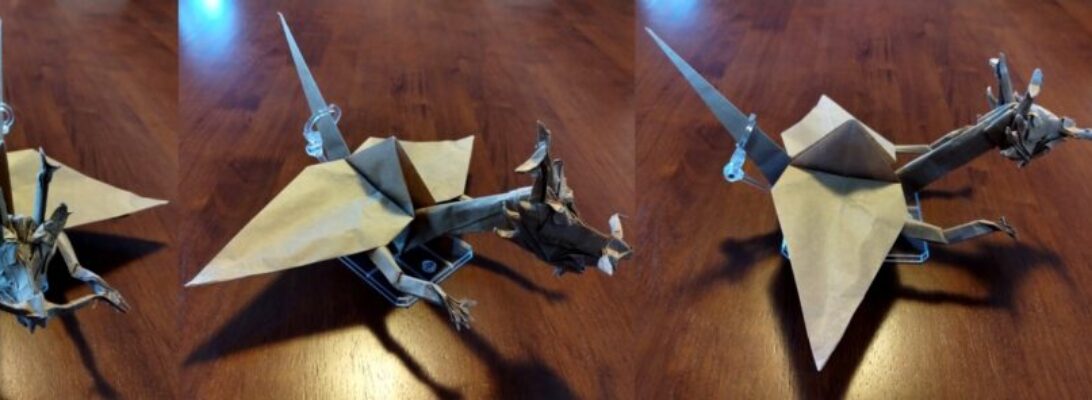When our kids were little tackers, we went on a summer holiday to Mon Repos, North Queensland, to see the turtles laying and hatching:
During the night, exhausted loggerhead, green and leatherback turtles haul themselves out of the surf, up the beach, gig holes and lay eggs – on the same beach they, themselves hatched from years earlier.
When I first saw this turtle, I assumes it MUST have been papercraft – you know, glue, cuts – very neat but none the less it could NOT be a single bit of paper.
Browsing my JOAS Tanteidan Convention books, to me delight, I stumbled across Satoshi Kamiya’s instructions (HUNDREDS of them) for the turtle (not sure what version) and knew I had to give it a try.
The shell corrugation/tesselation alone is a masterpiece, but then you wrap the unused paper around and inside (forming an internal support for the shell to keep it peaked) and form flippers and a lovely head.
I am so thrilled with this, my first fold – I am itching to fold it again, but cannot for the moment justify the nearly 8 hours necessary, to then have 2 turtles in the house. I cannot imagine folding it smaller – I have seen it tiny but I am not sure my fat clumsy fingers would let me achieve it as so many of the shaping manoeuvres are millimetre precise when folded from a 60cm sq.
I love this model, it takes pride of place in my paper shrine. I have resisted the urge to tape it up solid, as it holds it’s form without assistance – genius design.
…what can one do with a turtle I ask?




























